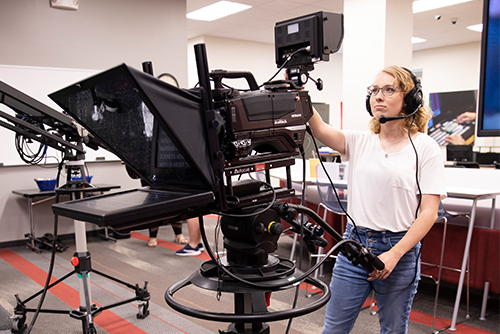Film has long been a powerful medium of mass communication, able to reach large audiences and convey messages, emotions, and ideas in a way that is both engaging and immersive. From its early beginnings as a novelty attraction in the late 1800s, film has evolved into a diverse and influential art form that is now a ubiquitous part of modern life.
One of the primary strengths of film as a medium of mass communication is its ability to visually convey complex ideas and emotions in a way that words alone cannot. Through the use of visuals, sound, music, and other elements of film language, filmmakers can create powerful and evocative images that can be understood by audiences around the world, regardless of their language or cultural background. This ability to communicate on an emotional level has made film a particularly effective medium for conveying messages about social and political issues, as well as for exploring deeper themes and ideas.
In addition to its ability to communicate ideas and emotions, film is also an effective medium for telling stories. Whether through traditional narrative structures or more experimental approaches, film has the power to engage audiences in a way that other forms of media cannot. This is partly due to its immersive nature, which allows viewers to become fully immersed in the world of the film and feel as if they are part of the story.
Another key aspect of film as a medium of mass communication is its accessibility. With the proliferation of streaming platforms and the increasing availability of film online, it is now easier than ever for people to access and watch films from all over the world. This has helped to expand the reach of film and has allowed it to become a truly global medium.
Despite its many strengths, film is not without its limitations as a medium of mass communication. One of the primary challenges is the high cost of production, which can make it difficult for independent filmmakers and those with less financial resources to get their work seen by a wider audience. Additionally, the film industry is often dominated by a small number of studios and distributors, which can limit the diversity of voices and perspectives that are represented.
Overall, film is a powerful and influential medium of mass communication that has the ability to reach large audiences and convey complex ideas and emotions in a way that is both engaging and immersive. Its accessibility and ability to tell stories have made it an important part of modern life, and it will continue to be a vital force in the world of mass communication for years to come.
MBA Media Management SPMVV: Film Studies: Cinema as a medium of communication

ADVERTISEMENTS: Thus, films leave lasting impression of the message. Its only because of mass media the world has come closer and international and national information are reaching every region of the world. Read less Film As A Medium Of Mass Communication PDF Book Details Product details Publisher : University of California Press; First edition March 30, 2000 Language : English Paperback : 332 pages ISBN-10 : 0520221389 ISBN-13 : 978-0520221383 Lexile measure : 1320L Item Weight : 1. The film is a powerful medium of mass communication, not only for entertainment but also for illumination and education. People on the screen can be seen walking, talking, laughing, weeping, dancing, singing, sleeping, driving etc. This means that people will perceive media the way they want and according to their likes. Introduction Mass media is the foremost medium of conveying information, learning and entertainment to the public.
BFS Course Book: FILM AS A MASS COMMUNICATION MEDIUM

Khan, Samee Ullah, et al. The gay community is battling with the negative image and is trying its level best to overcome the stereotypes the television, films and other media have created. The movies focus on surface-level aspects of homosexuals like the way they act, look, and talk. Media plays a major role in changing the public opinions because they have major access to people and this eventually gives a lot of strength to media. Even though India currently has the most advanced cinematography technology among the developing countries, there is minimal development in terms of artistic credo.
Mass Communication & The Film Industry

Aspects of staging, blocking and composition in the context of studio and location lighting. It was this time when directors and actors such like Bimal Roy, Raj Kapooe, Guru Dutt, V Santaram, Mehaboob Khan became popular in both India as well as abroad. The current amount of movie genres is astonishingly large, with countless subgenres and the emergence of new ones. Media effects have been debated and researched for decades together. At first, the attended stimuli are turned into images on the retina and later they are transformed into electrical signals that are transferred through the brain.
Films As A Form Of Mass Media Media Essay

The films take as their starting point those aspects of society with which we have become familiar. It is largely unregulated however; there is government film division, directorate of movie festivals, and a film development corporation. Some of these stars, Shah Rukh Khan and Salman Khan are paid over 20 million rupees 440,000 US dollars per film. This broadcasting segment is made up of over 100 private television and cable channels spread all over the country. Moreover, by revolving the film stories and characters around the traditional ideas and role stereotypes, they foster the role stereotypes in the society in general. Learning outcomes: what you will learn in this course.







